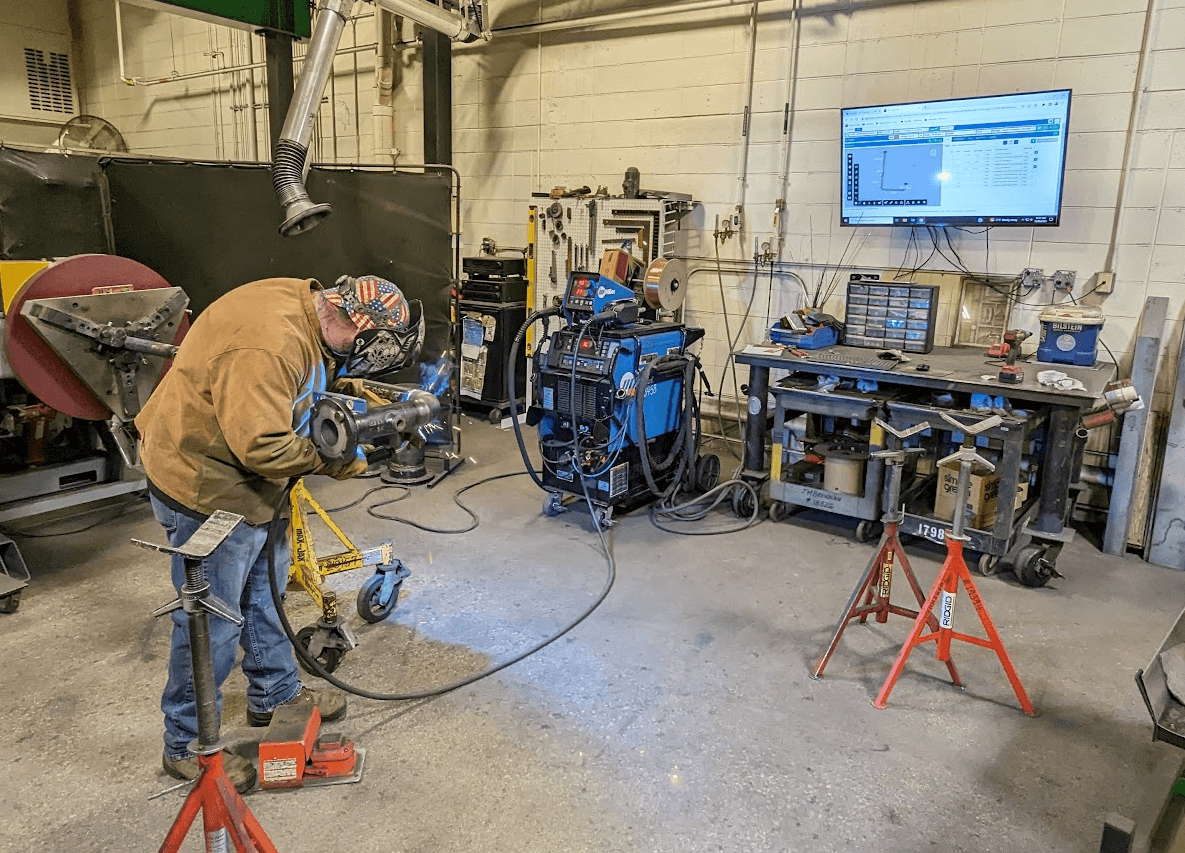
A decision to expand their workspace led J.M. Brennan to use Stratus to create a digital workflow that dramatically improved efficiency on the shop floor. After about two months, the investment had paid for itself with tremendous time savings, primarily in spooling. Integrating Stratus into the workflow not only transformed internal processes but also overall efficiency.
Justin Harer, director of construction operations at J.M. Brennan in Milwaukee, has more than 20 years of expertise at the company, where he started as an intern. He oversees all engineering, design, building information modeling, virtual design and construction, and shop fabrication for prefabrication activities. He explained how the adoption of Stratus fundamentally reshaped J.M. Brennan’s operations, beginning with the shop layout.
“A few years ago, we realized we ran out of room in our shops because of our increased utilization of prefabrication,” said Harer. “We decided to expand our shop, specifically for copper and PVC fabrication. Stratus was a pivotal part of reimagining that space around a digital workflow.”
J.M. Brennan updated workstations to integrate with digital models. They ensured screens were large enough so that workers could view them even from the end of a 20-foot pipe. All inputs were made wireless, allowing for seamless operations even when working at a distance.
Field operations have also seen a shift with Stratus. All field foremen are equipped with iPads® to ensure high-speed connections and easy access to digital models and spools. This shift has eradicated the need for paper plot spool drawings; instead, everything is now purely digital.
Regarding the return on J.M. Brennan’s investment in Stratus, Harer remarked, “The payback period was less than two months, primarily due to time saved in spooling. Given that we were previously spending 10–20 minutes per spool, reducing that time to less than 30 seconds was revolutionary.”
Implementing Stratus was a methodical journey. Initially, it involved intense labor, as the team had to create all reports and workflows from scratch. In today’s setup, new users benefit from prebuilt templates, making the onboarding process significantly faster and smoother.
While change is not always welcomed, the integration of Stratus into daily operations has led to substantial improvements for J.M. Brennan. The key was gradual implementation and training—starting with projects and teams open to new methods before expanding more broadly.
Harer concluded, “Our construction industry needs to evolve and keep up with technological innovations to remain efficient and competitive.” J.M. Brennan’s experience demonstrates that investing in digital workflows like Stratus is not just about buying new software— it is about fundamentally rethinking how work gets done, leading to better outcomes and future-ready operations.
For more information, visit www.stratus.build.


